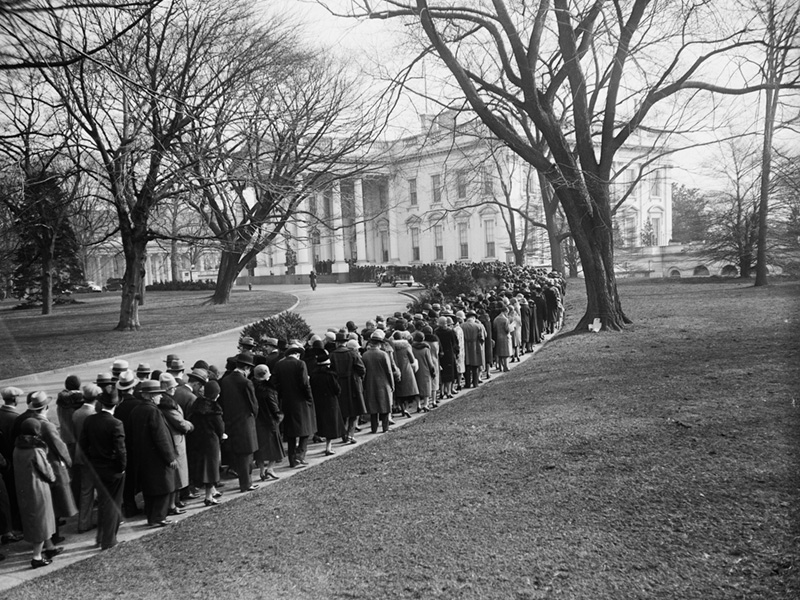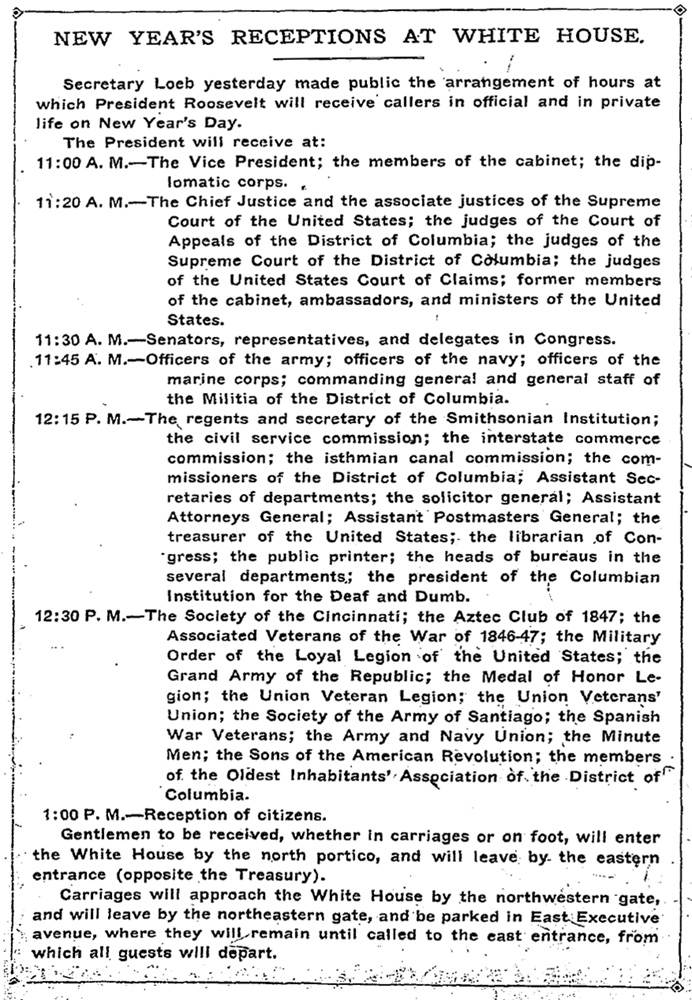
On January 1, 1922, President Warren Harding and his wife Florence revived the traditional New Year’s Day reception at the White House for thousands of guests. The annual open house had taken place in Washington since 1801, with the president greeting foreign and government dignitaries before letting in the general public for a long handshaking session. Hoards flocked to the democratic ritual to enjoy a brief one-on-one with their chief executive inside the “people’s house.” But Woodrow Wilson had declined to host the event during his administration (1913-1921), presumably due to the death of his wife, the First World War, and a paralytic stroke. So there was great excitement when the tradition was reinstated: “Brilliant With Pageantry Of Color, Excels All Precedent,” gushed the Washington Post the next day.
1922 marked the first time a former occupant of the Oval Office attended the event as chief justice. As president, William H. Taft had dutifully hosted the New Year’s Day receptions in 1910-1913, tirelessly greeting more than 6,000 people and reportedly shaking 40 hands per minute. It was a miserable ordeal. Indeed, Helen “Nellie” Herron Taft was grateful that as First Lady she was allowed to opt out when she felt fatigued, leaving her husband to continue solo. “I saw the line of waiting people stretching out through the spacious grounds, down the street, and around the corner and out of sight at a time I had already given up out of utter exhaustion,” she wrote in her autobiography.
Having paid his dues as host, now it was Taft’s turn to be a guest. At 11 am President and Mrs. Harding stood in the Blue Room ready to greet the first cohort of dignitaries: the diplomatic corps dressed in their national dress. Second in the social hierarchy was the Supreme Court. A smiling Taft, whom Harding had recently appointed chief justice, led Nellie (wearing “greenish blue velvet”) into their former abode to the familiar sounds of the Marine Band. According to the Washington Post, “As he passed down the line, Chief Justice Taft held an impromptu reception, as it were, in the green room [chatting with his former staff], then passed into the east room and was instantly surrounded.” He greeted “the attaches of the White House, many of whom had been stationed there during his administration.” Taft had been uncomfortable as president and vastly preferred being chief justice. He was no doubt relieved that when the band played “Hail to the Chief” it was not for him.
Following Taft in the receiving line were the other members of the Court and of the DC-based judicial branch, which in 1922 consisted of “the Court of Appeals of the District of Columbia, the Supreme Court of the District of Columbia, the Court of Claims, and the court of customs appeals.” (Traditionally, wives of the justices, along with congressional wives, were invited by the First Lady to help receive guests in the Blue Room.) According to protocol, next in line were “Senators and Representatives” and then members of the armed forces. Finally, at 1 pm, the public was let in. By then Taft and his brethren had slipped away to attend lunches in friends’ homes.

The protocol sheet from 1908 showing the order of seniority for distinguished guests. The judicial branch followed the diplomatic corps but preceded Congress and the military. In 1922 leaders of the armed forces were invited to arrive before members of Congress, perhaps because the recent world war had increased their status.




